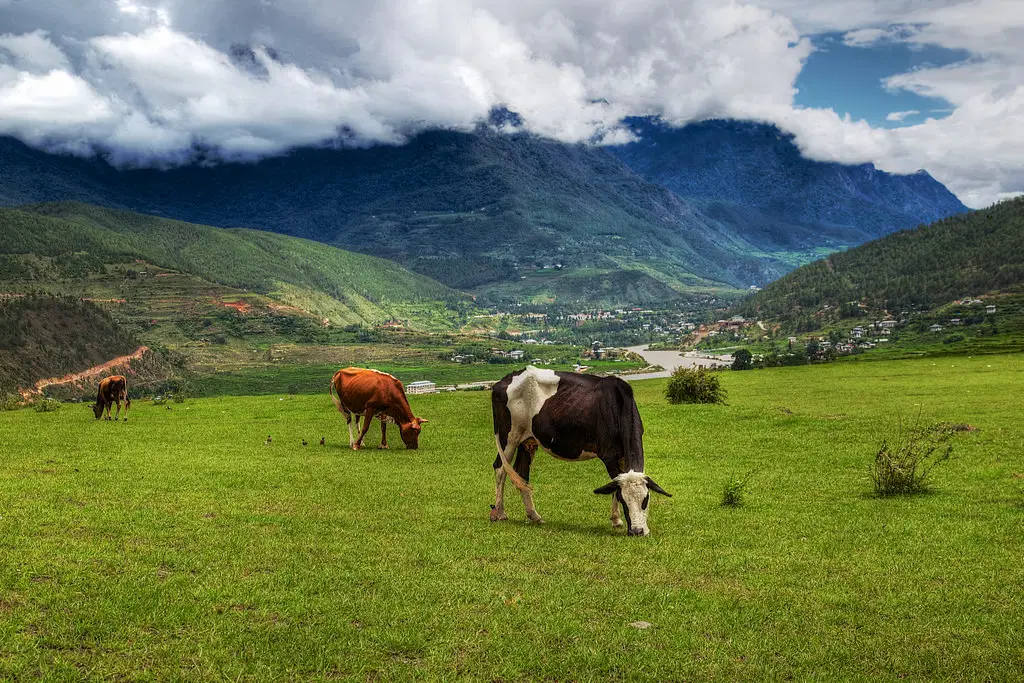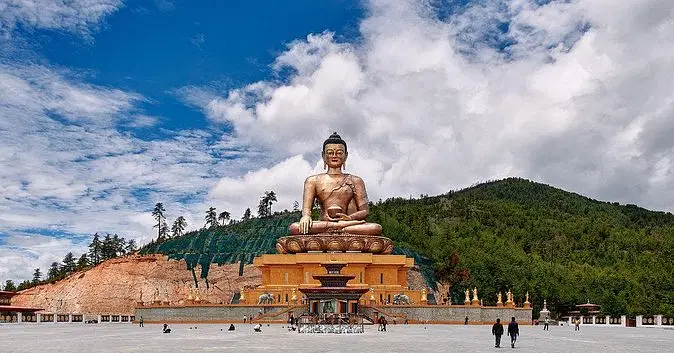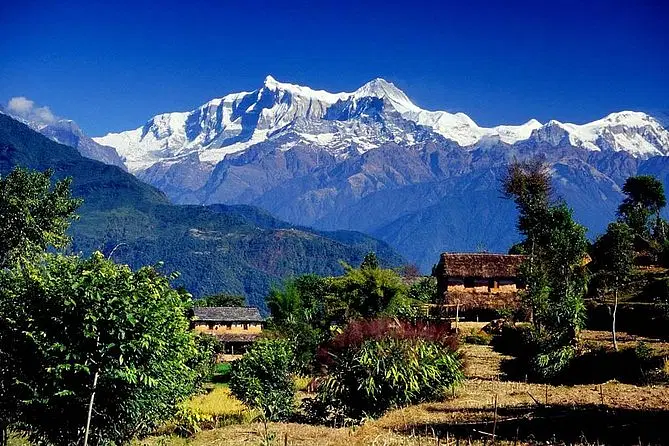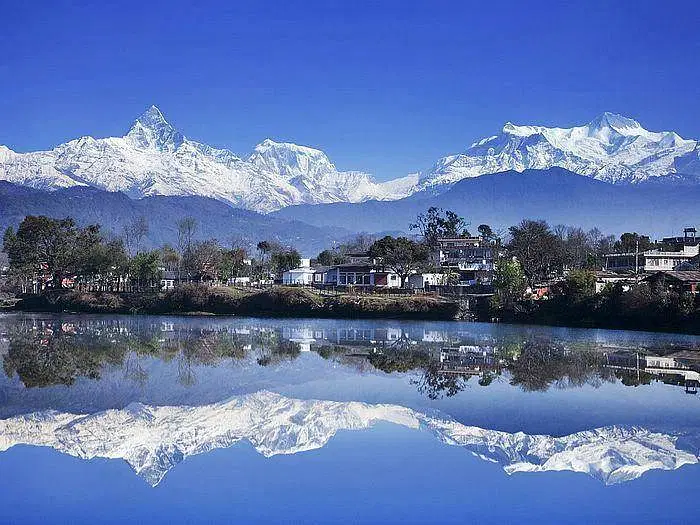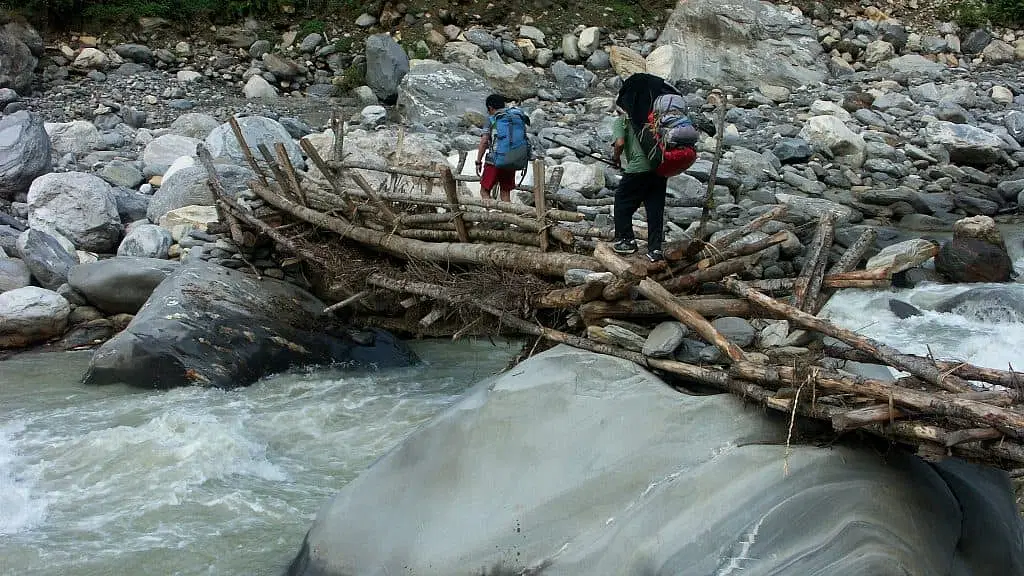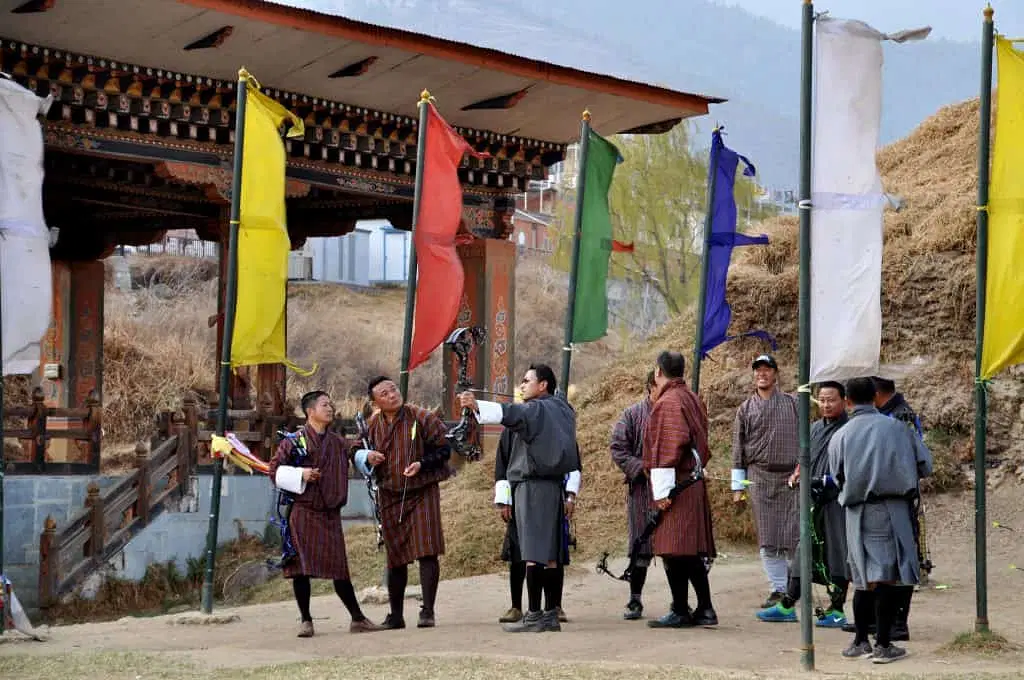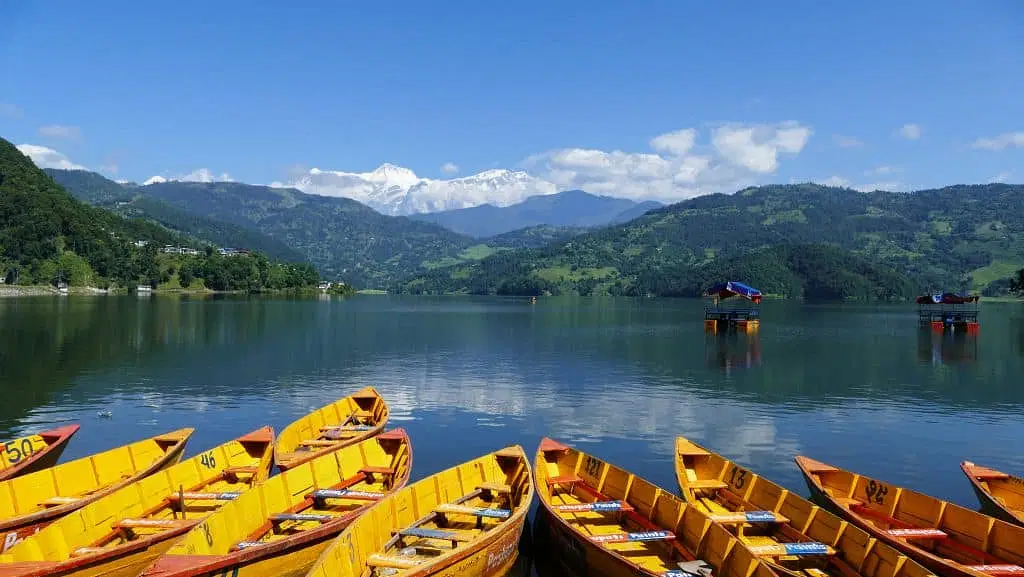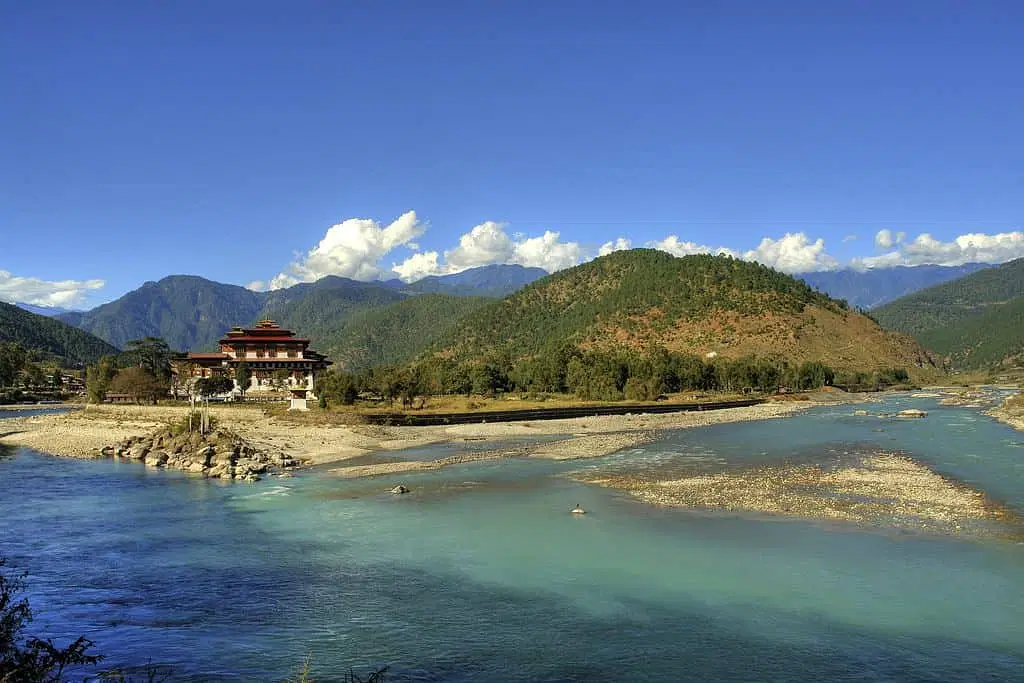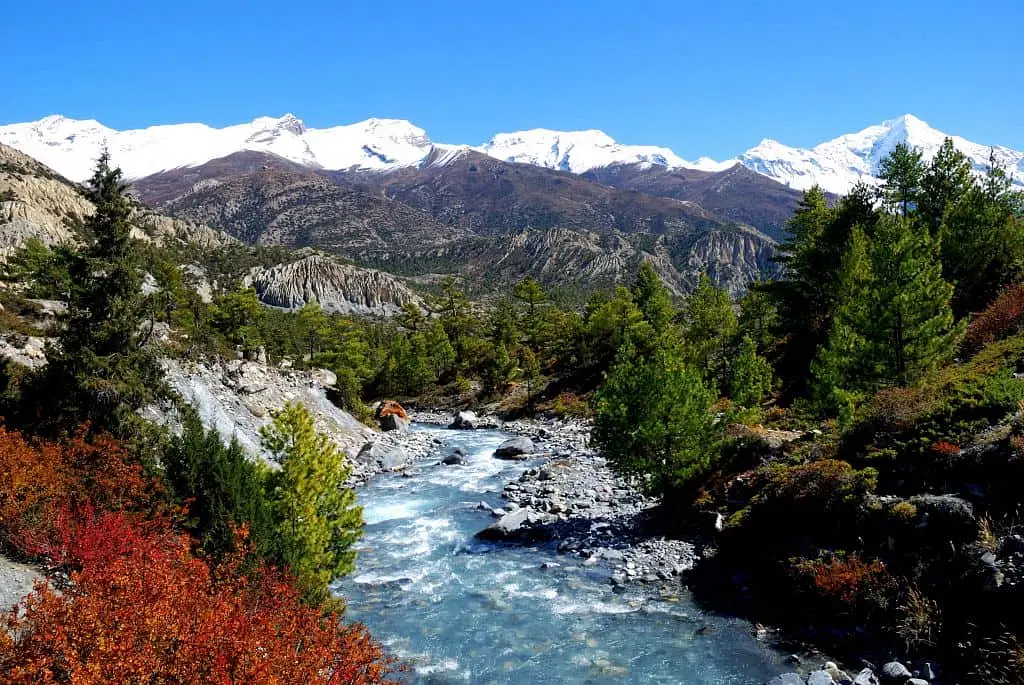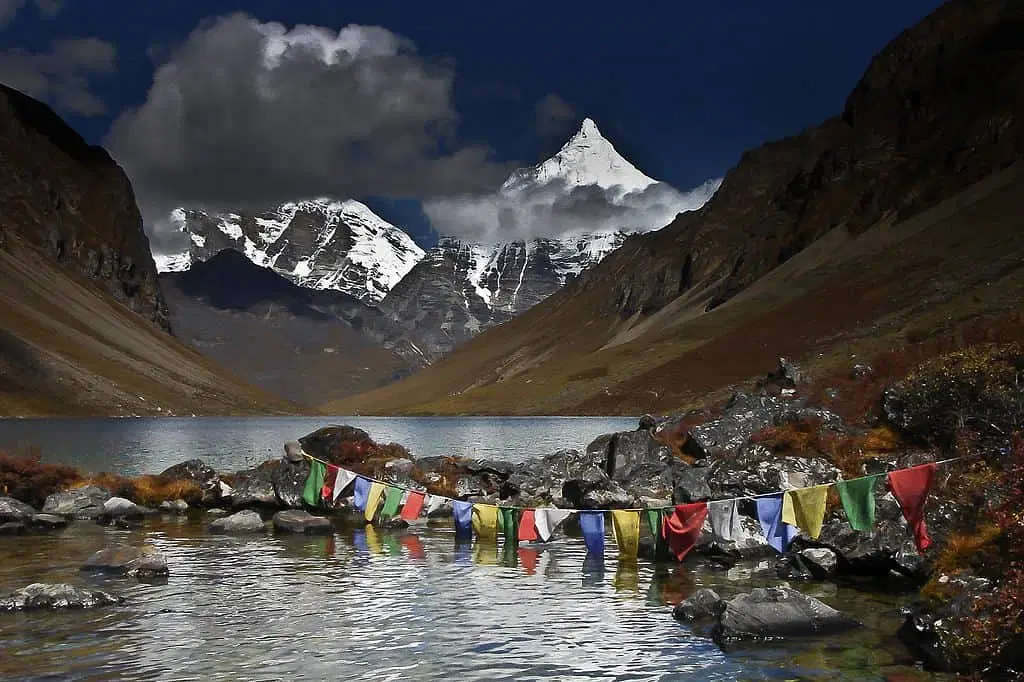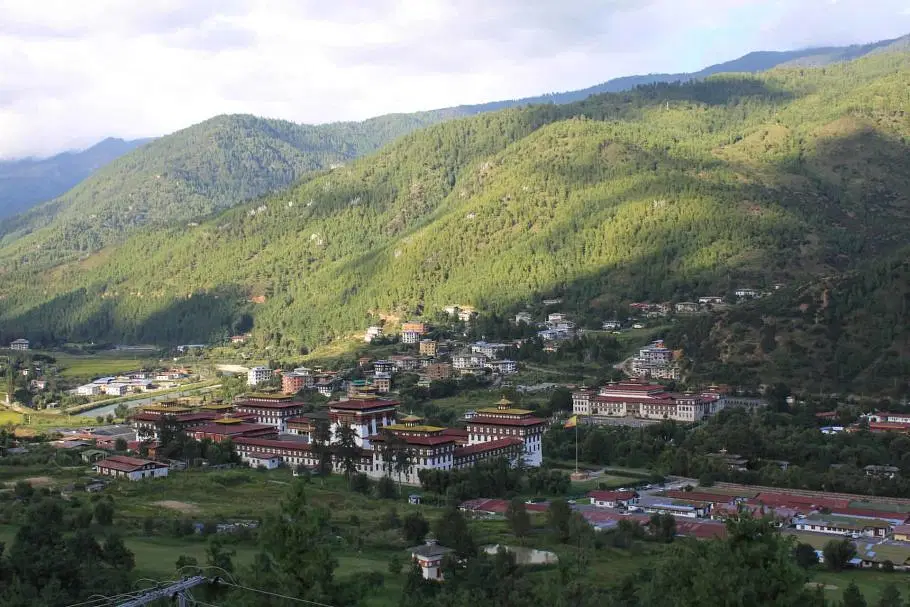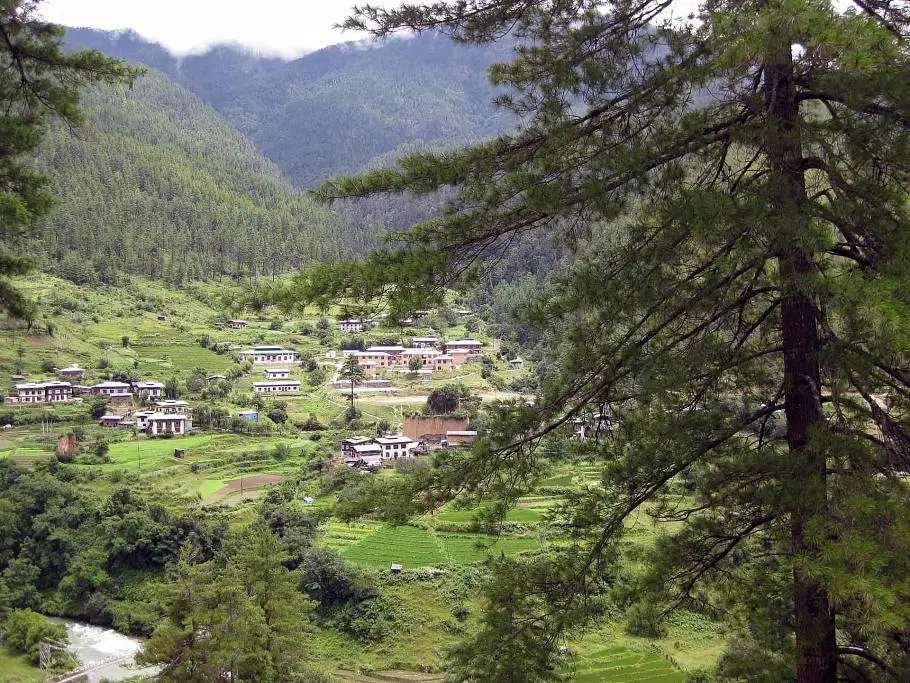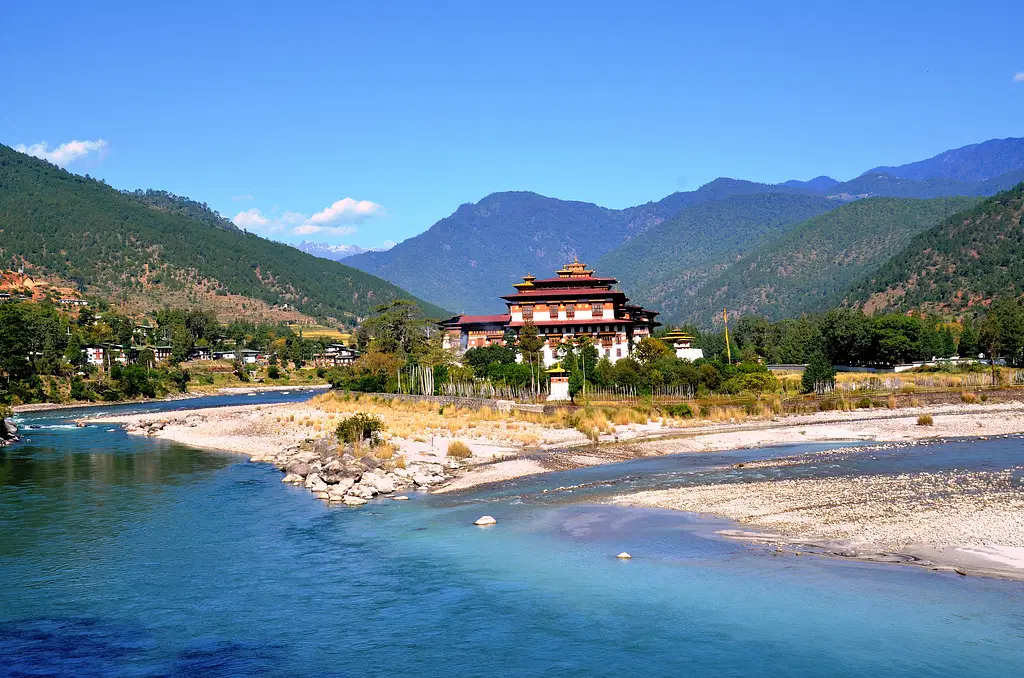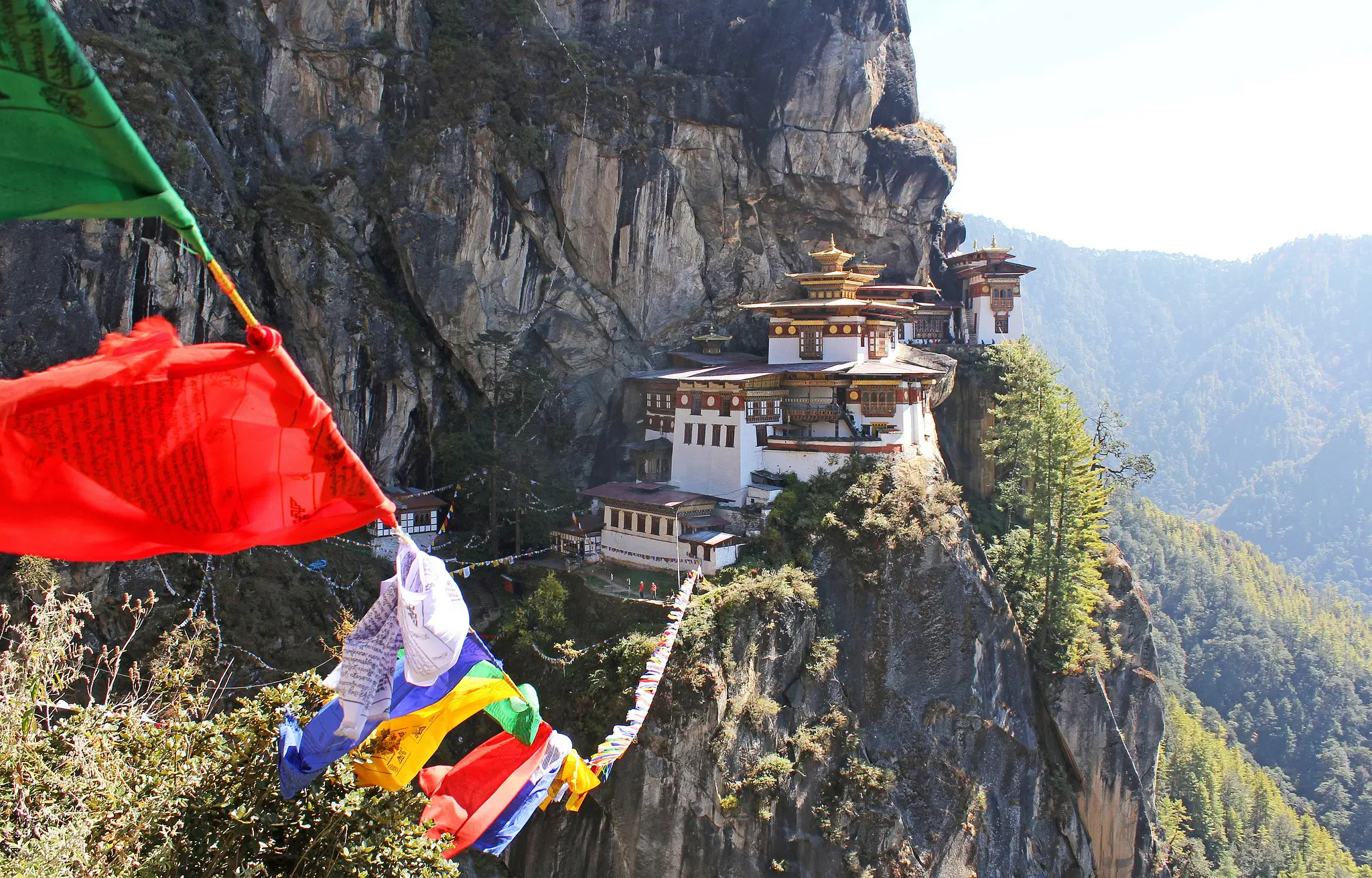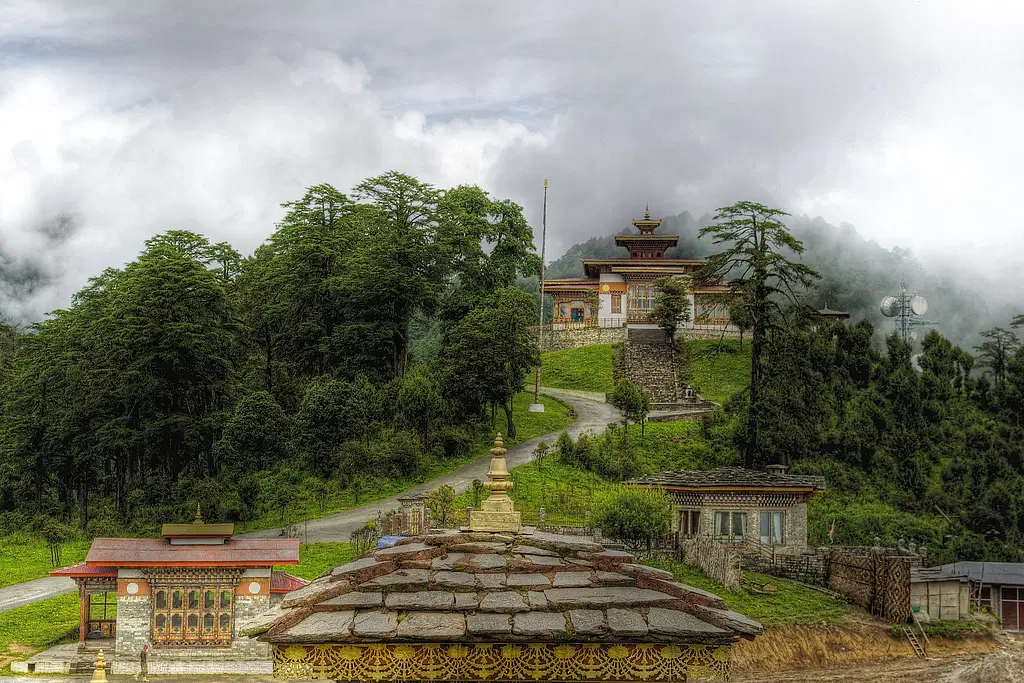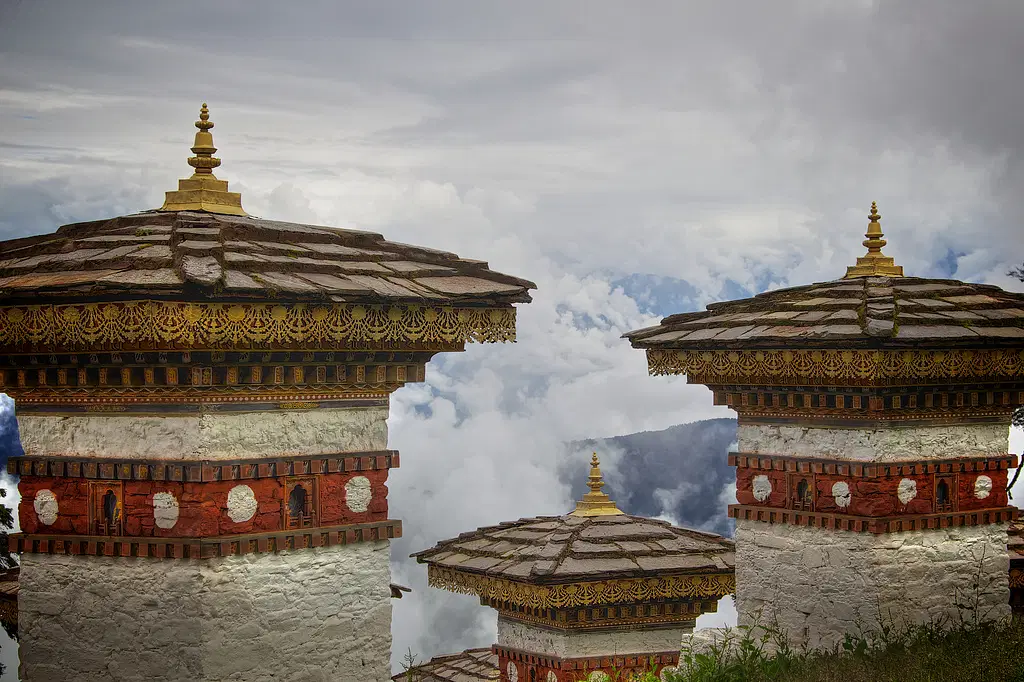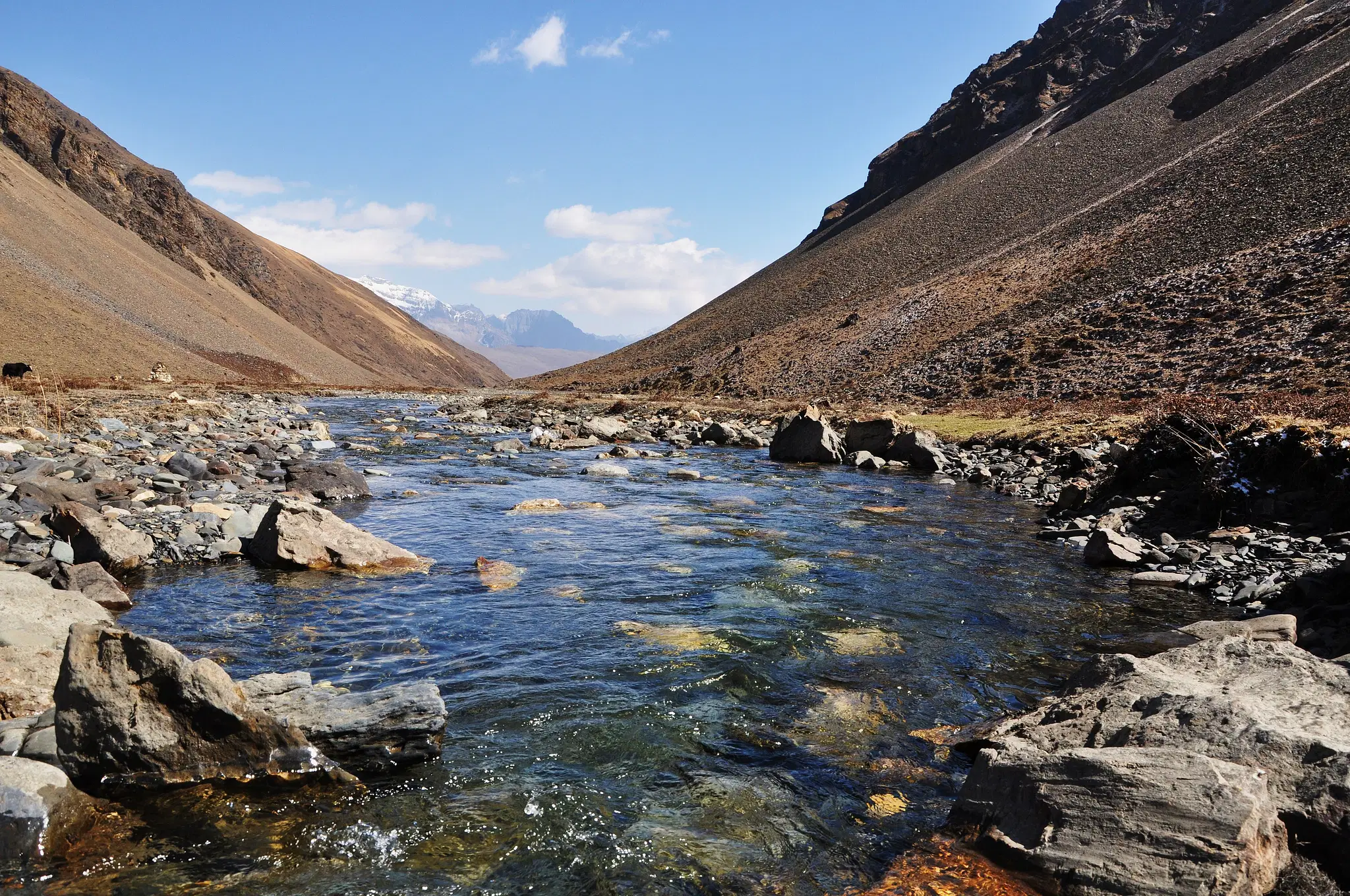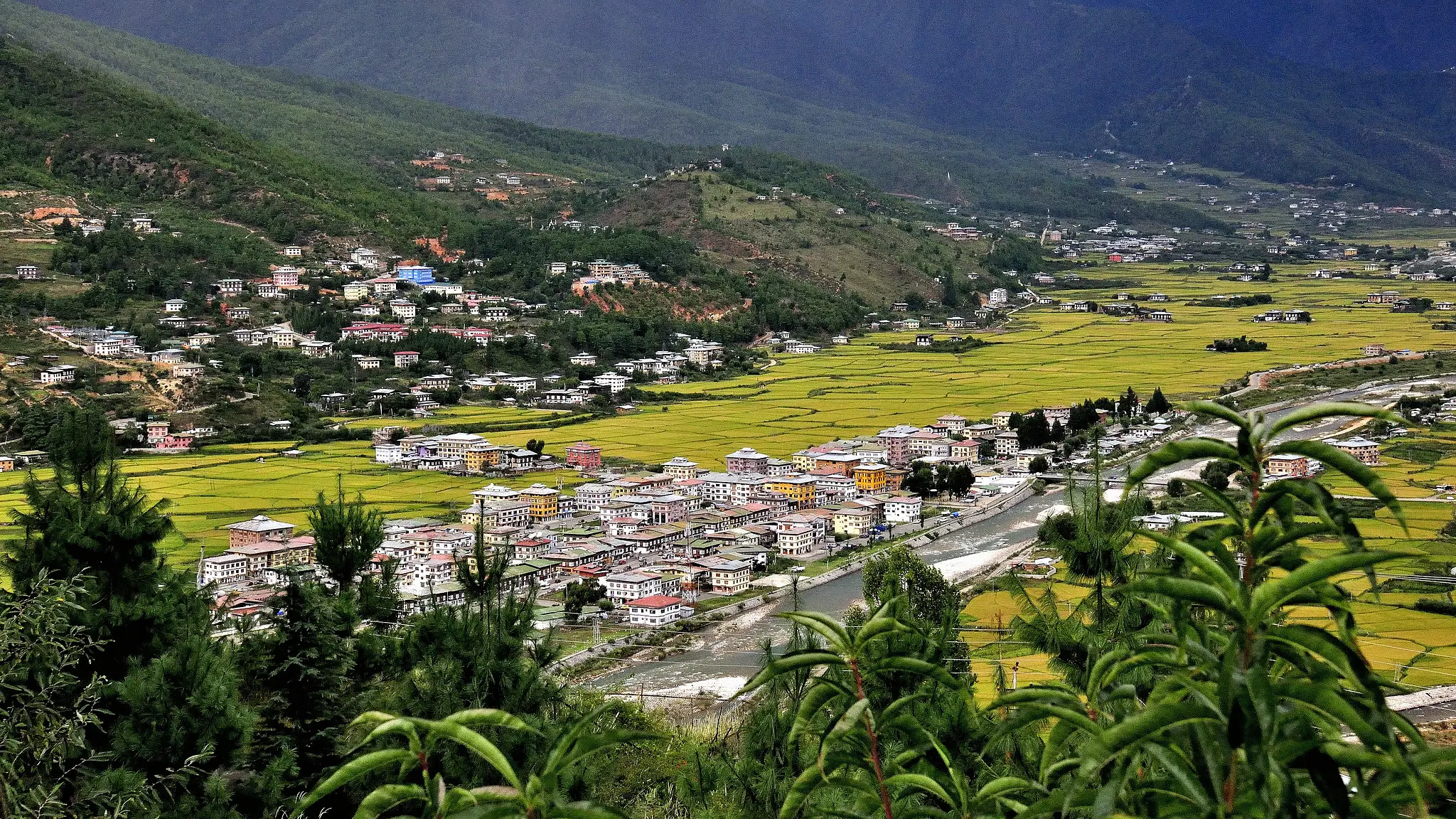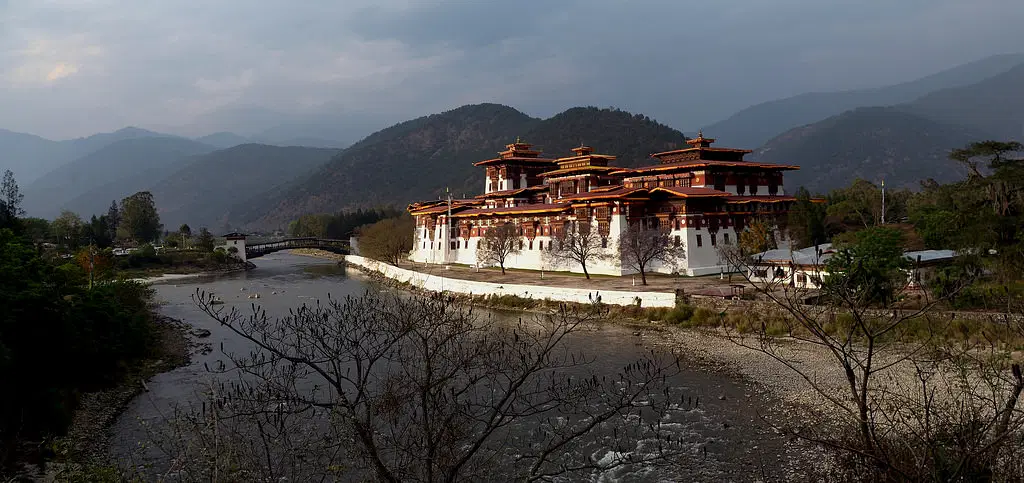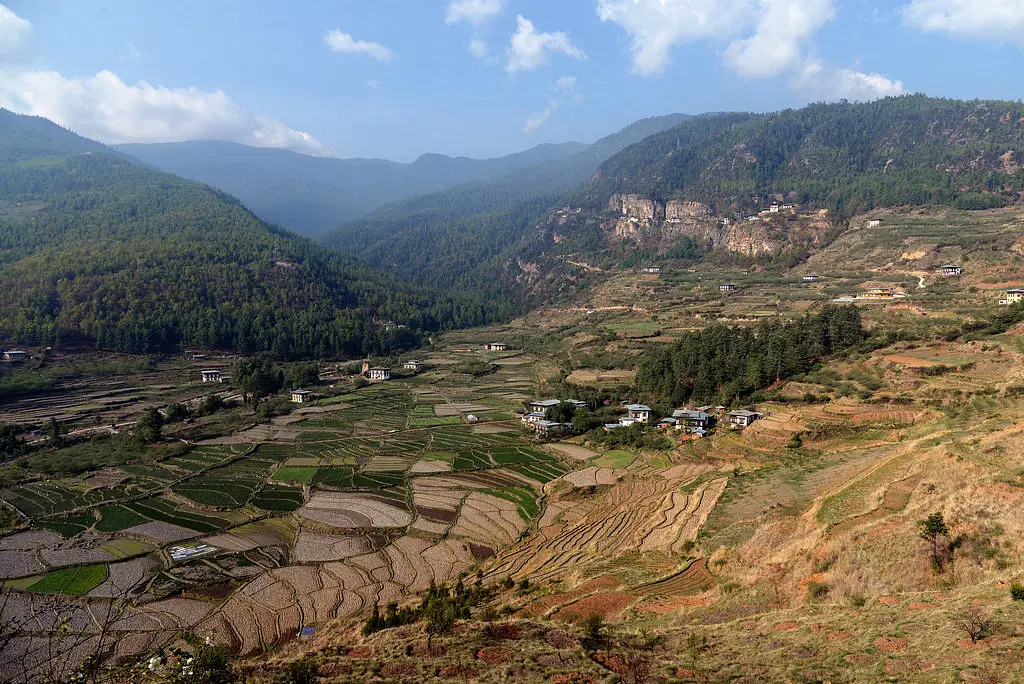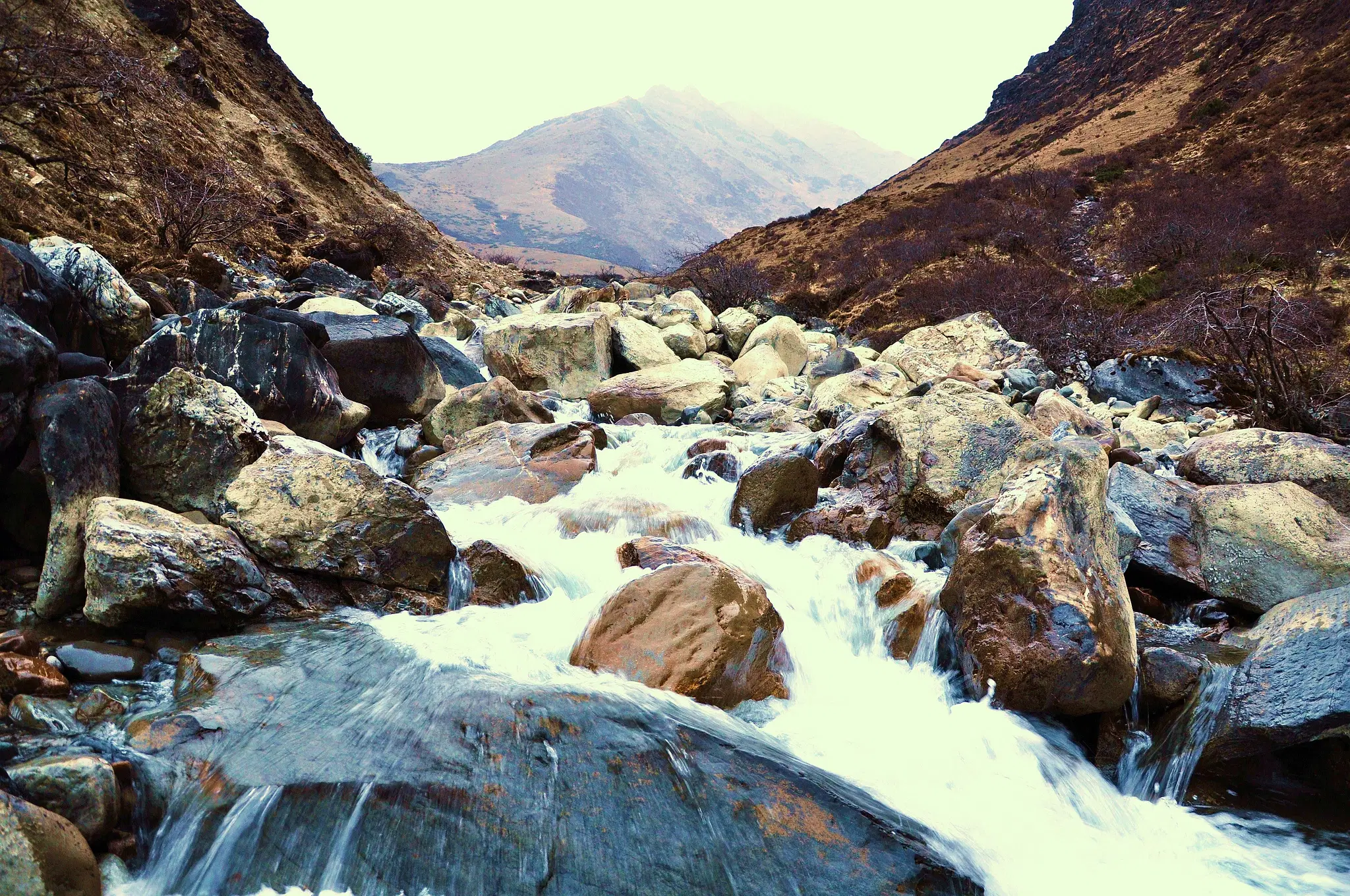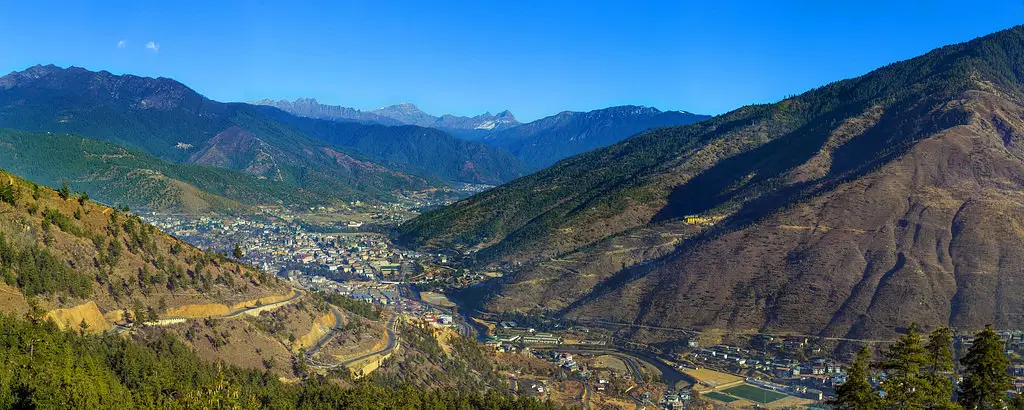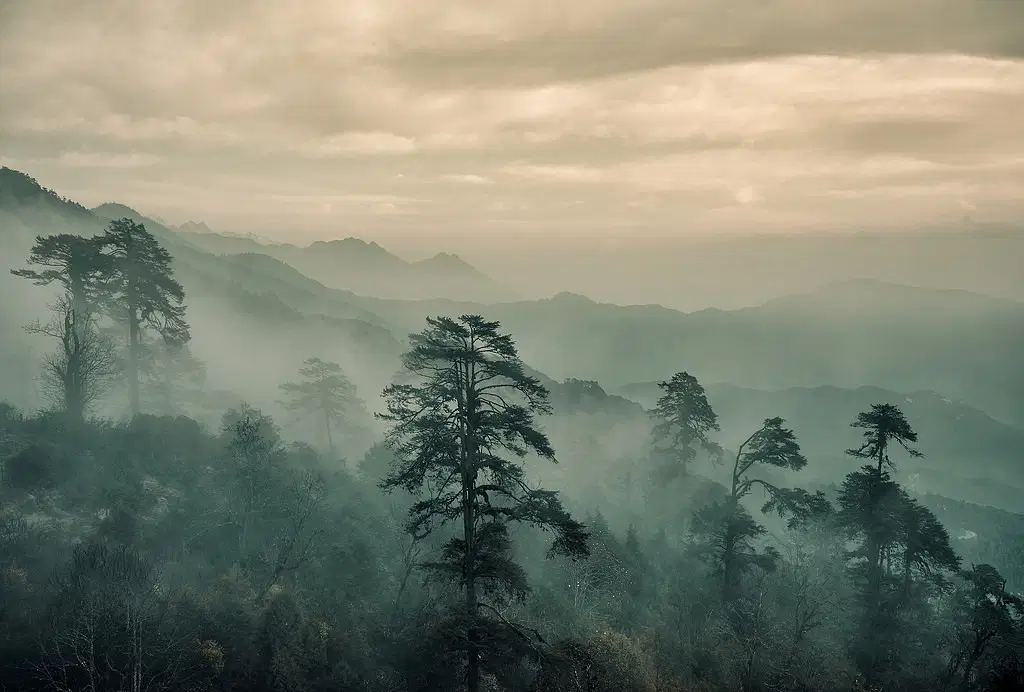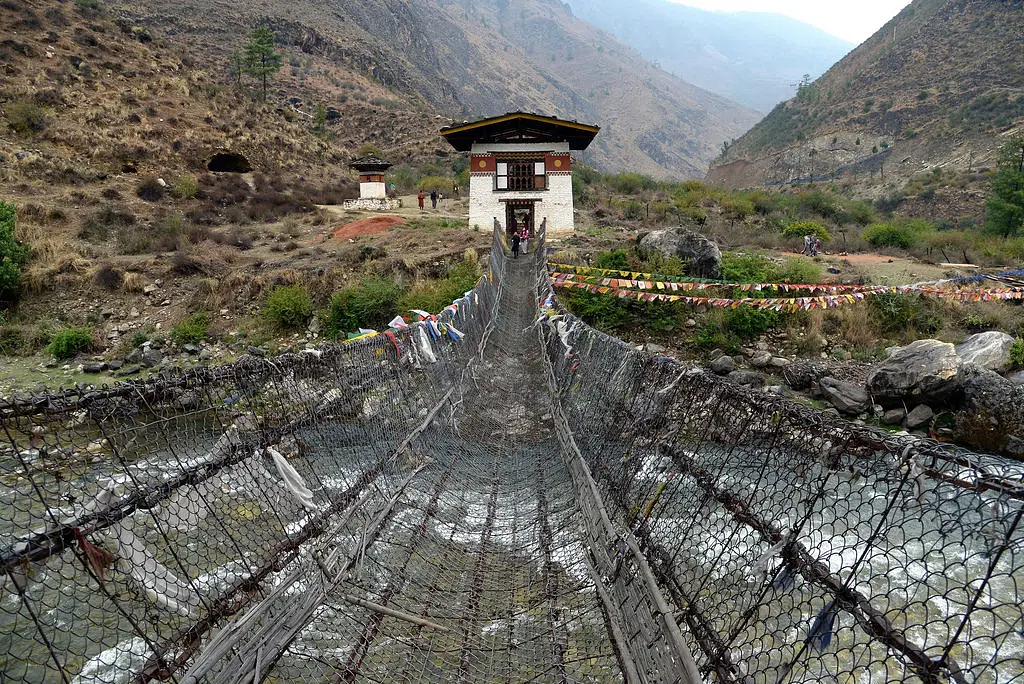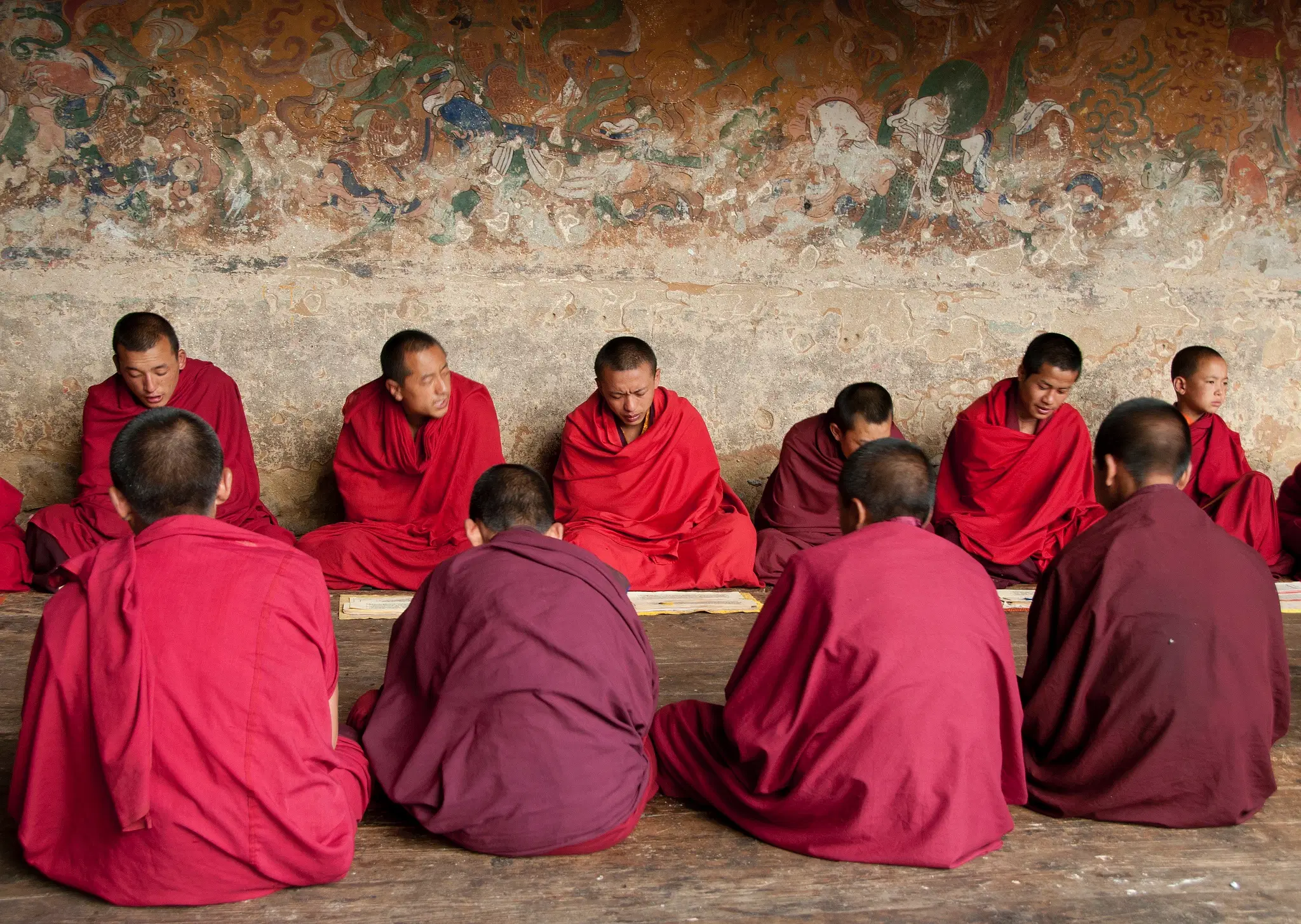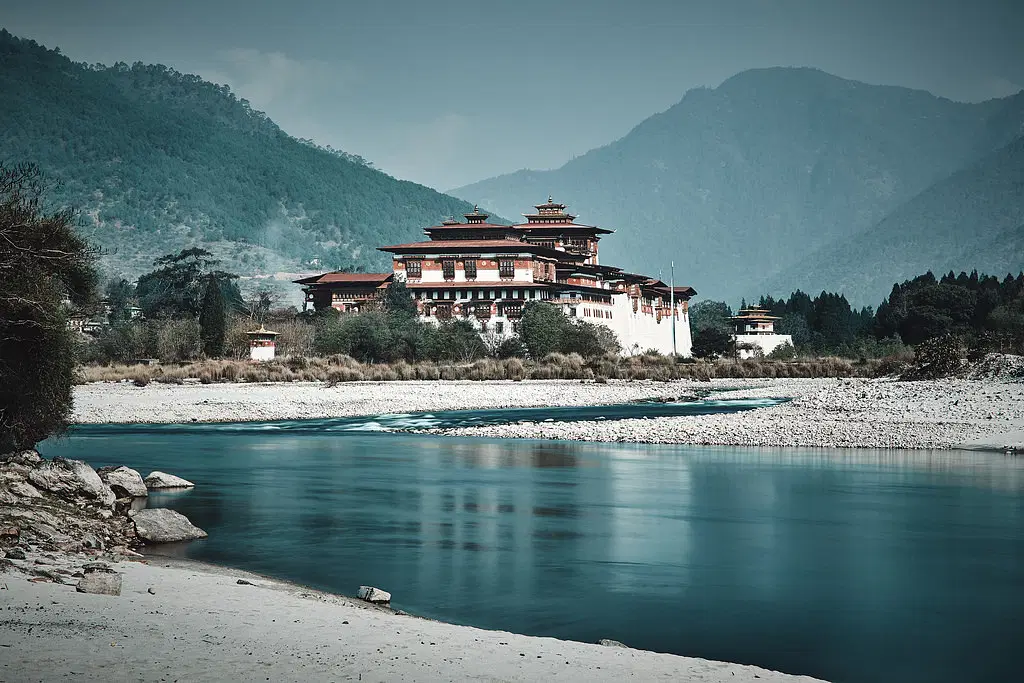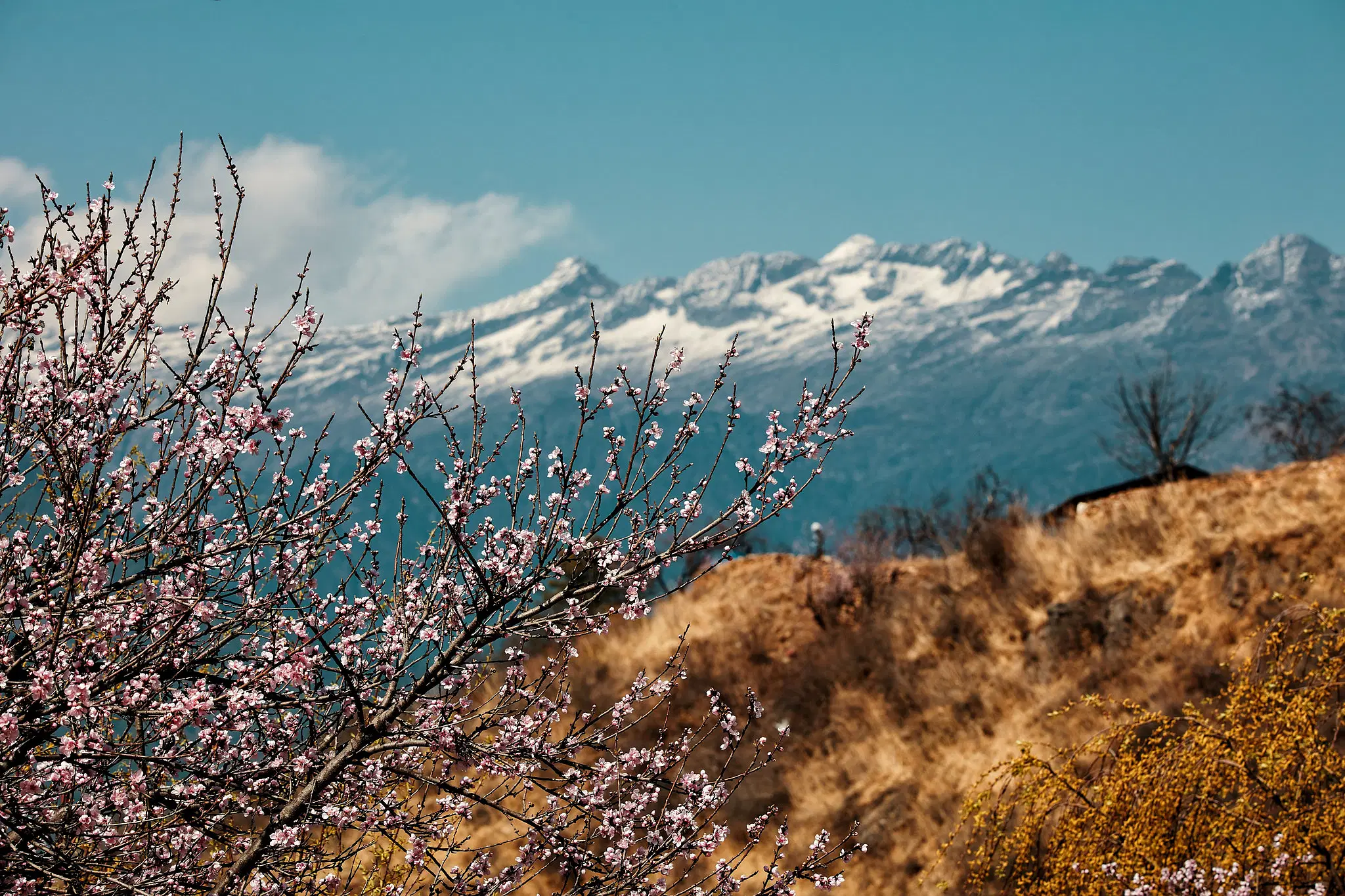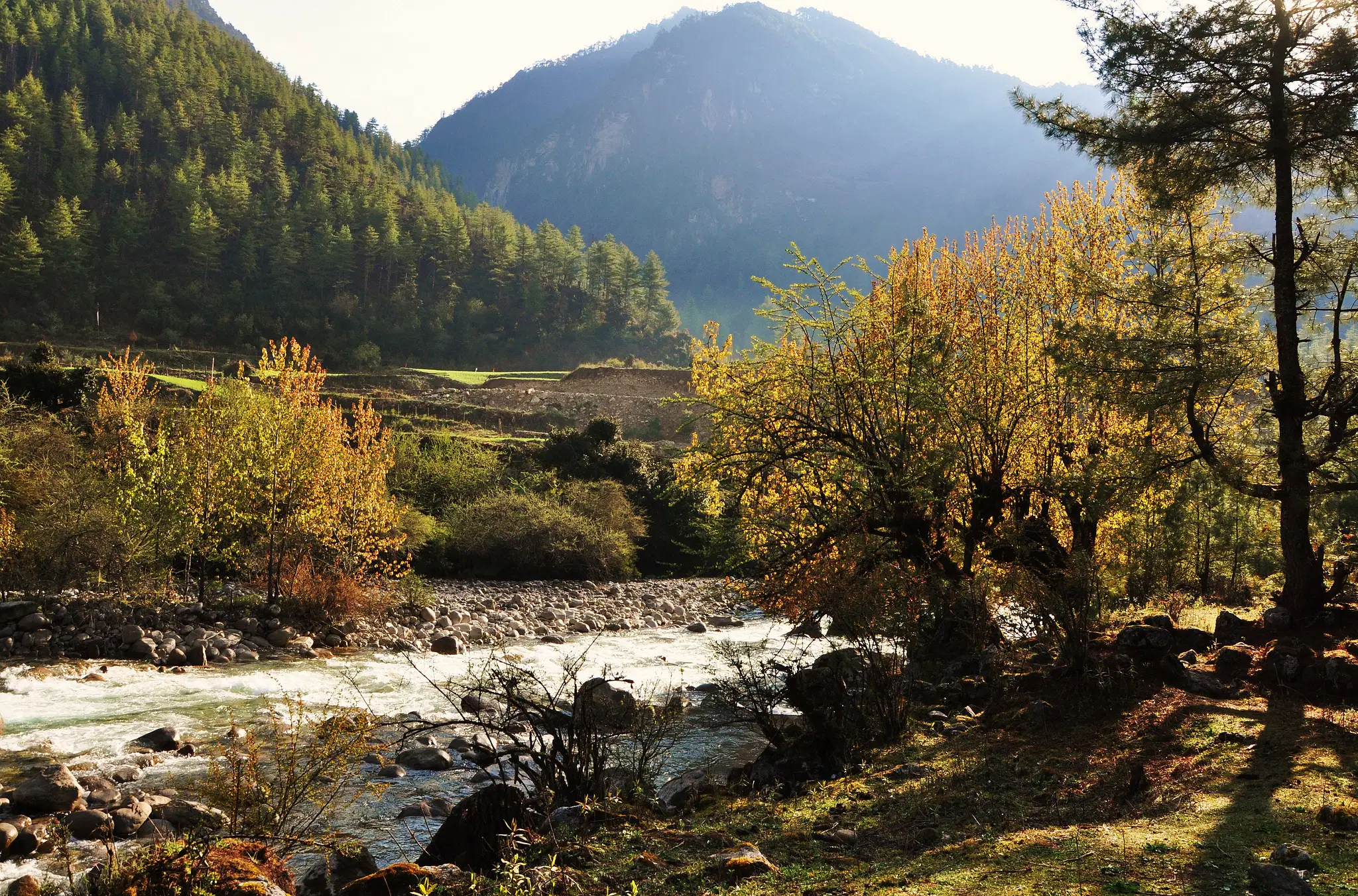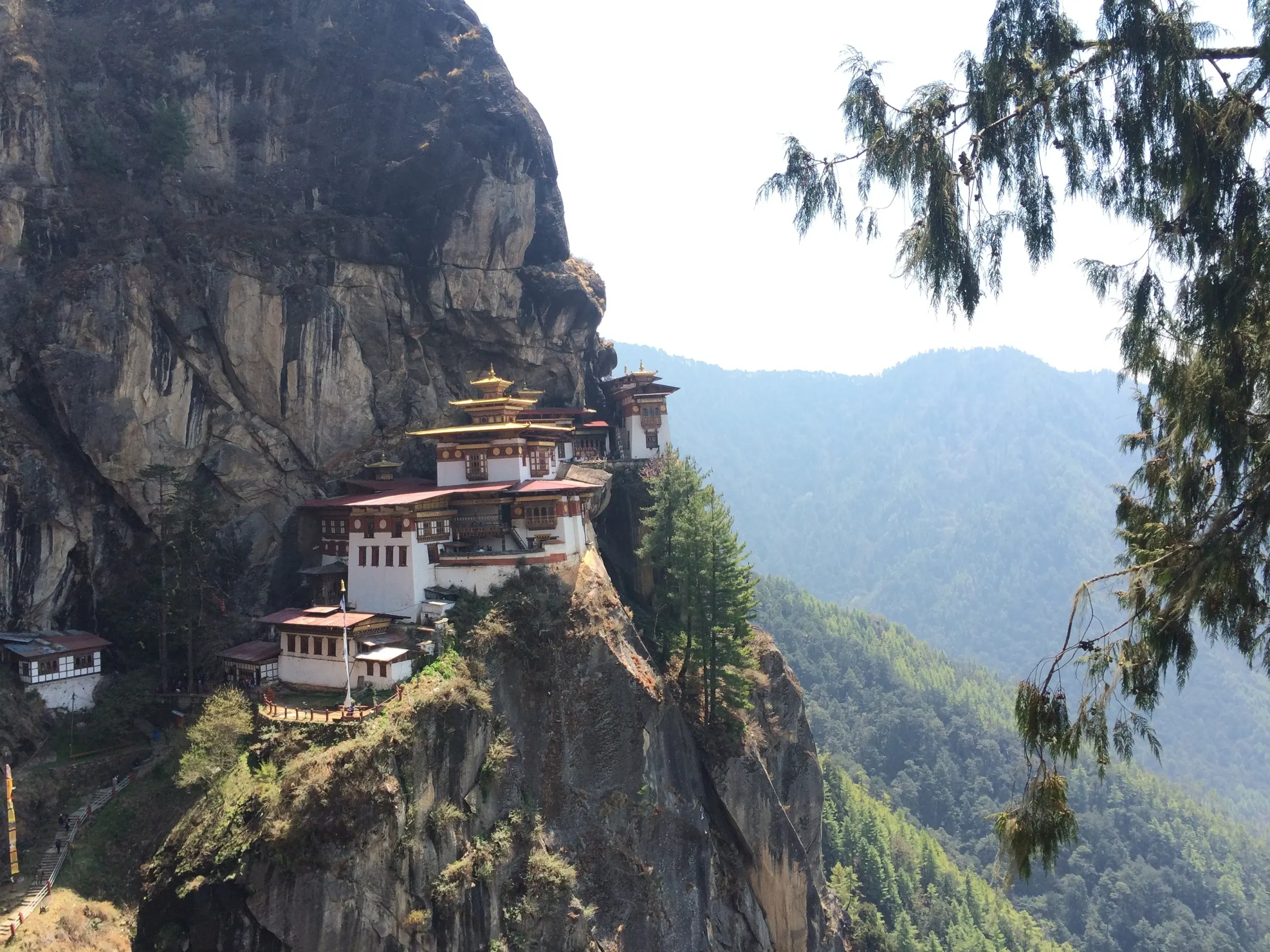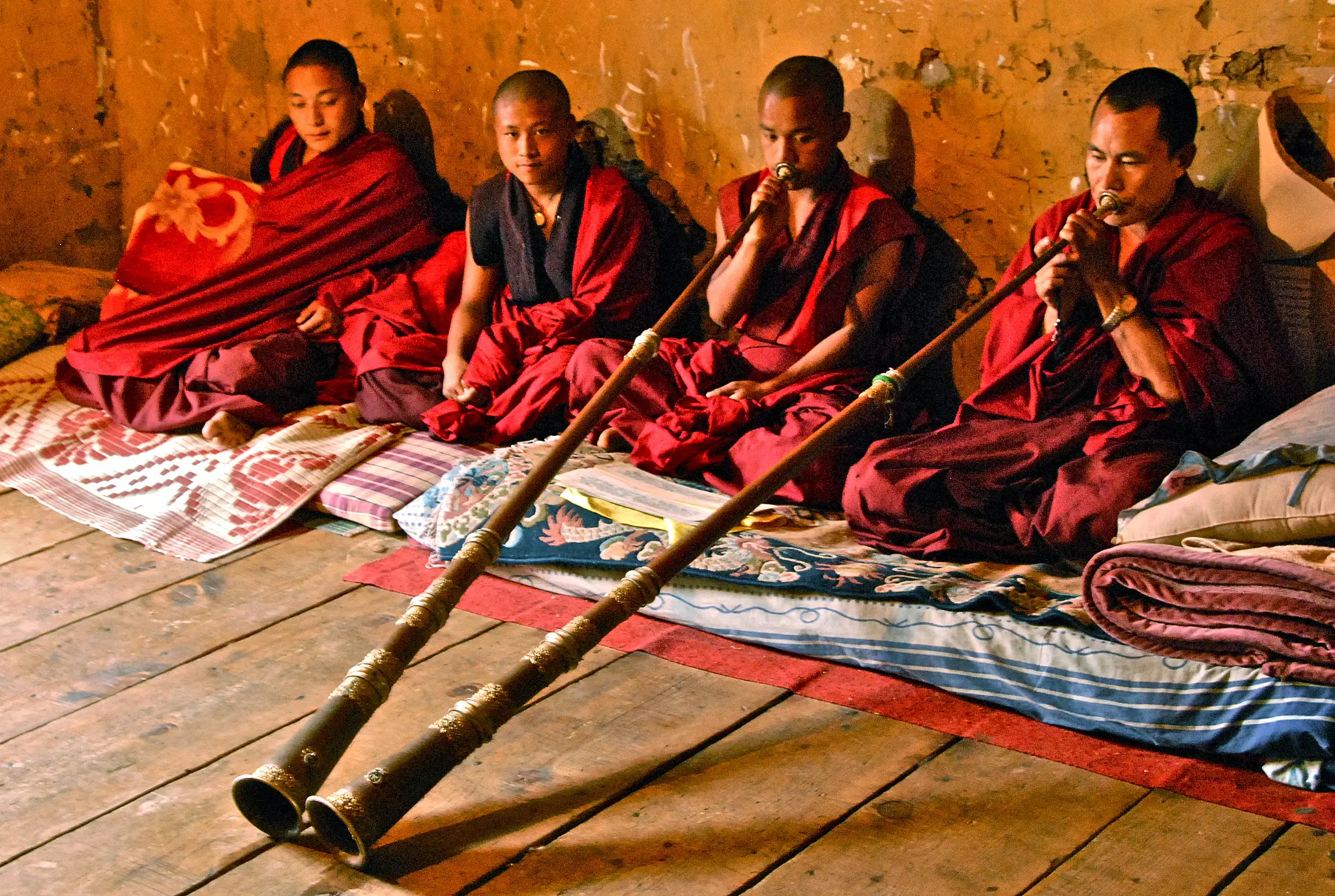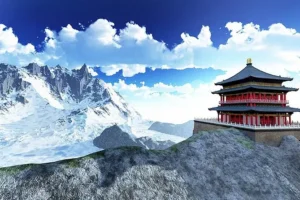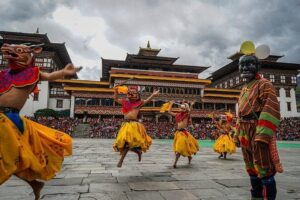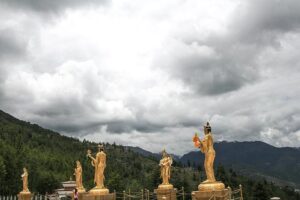15 Days
16-70
Easy
Nepal & Bhutan
Tour
Tribhuvan International Airport
Paro International Airport
This Magical Nepal Bhutan Tour offers visitors the perfect insight, while highlighting many traditional landmarks and culture customs of both the Nepalese and Bhutanese people. The skills of the the local artisans are so vivid in the handicrafts that, it never fails to amaze visitors to these two Himalayan kingdom.
Itinerary
Our airport representative will be receiving you at Tribhuvan International Airport. You will then be transferred to your respective hotel in our private tourist vehicle.
This includes a final briefing and preparations for the trip. For the meeting, please make sure you bring your passport, two copies of passport-size photos, and a readable copy of your travel insurance policy. After the pre-trip meeting, your sightseeing trip will start. You will have a private vehicle and a professional tour guide at your disposal.
- Bhaktapur Durbar Square
Bhaktapur Durbar Square is a collection of pagoda and shikhara–style temples grouped around a fifty-five-window palace of brick and wood. The attraction of the Bhaktapur Durbar Square is the Lion Gate, the Golden Gate, the Palace of fifty-five windows, art galleries, and the statue of King Bhupatindra Malla.
- Changunarayan Temple
The temple is situated on a ridge overlooking the Kathmandu valley, about 12 km east of the city. Dedicated to the Hindu God Vishnu, it is one of the finest and oldest specimens of pagoda architecture, built in 323 AD by King Haridatta Verma. The temple is richly decorated with sculptures and carvings, and its position above the Kathmandu valley affords a beautiful view of the surrounding countryside.
Khokana and Bungamati Village
Founded in the 7th century, Bungamati is home to one of the most important gods of the Kathmandu Valley, Matsyendranath, or the God of Rain & Compassion. Worshipped equally by Hindus and Buddhists, the god is credited by local people with the introduction of rice plantations in the valley. The rich heritage and relatively unchanging lifestyle of the Newar people are clear to see both in Bungamati and in the nearby village of Khokana, which we also visit.
- Patan Durbar Square
Patan Durbar Square is an enchanting combination of palace buildings, artistic courtyards, and graceful pagoda temples. The former royal palace complex is the center of Patan’s religious and social life, and houses a museum containing an array of bronze statues and religious objects. One remarkable monument here is a 17th-century temple dedicated to the Hindu god Krishna, built entirely of stone.
We will then have an hour of scenic drive to Nagarkot, famous for its vantage point of mountains and sunrise and sunset.
Our tour staff will arrive at your hotel at 6:30 am to pick you up. The bus to Pokhara will leave at around 7.30 am. Pokhara is a beautiful valley, with panoramic views of Annapurna, Machapuchare (the shape of a fish tail) in the north, Dhaulagiri in the west, Lamjung Himal, and Manaslu in the east. The town of Pokhara is set on the banks of Phewa Lake. It is smaller and much less hectic than Kathmandu, providing the perfect getaway for our tour. Overnight at a hotel.
Your sightseeing trip will start after breakfast. We provide a private vehicle and a professional tour guide. The places we visit are as below:
1. Bindhyabasini Temple
Lies in the center of the old religious bazaar. It is dedicated to Goddess Bhagawati, yet another manifestation of Shakti. The park grounds offer a fine picnic and relaxing area.
2. Begnas and Rupa Lakes
The two lakes lie in the north-east of the Pokhara valley at a distance of 13 km from the main city of Pokhara. These lakes are located at the foothill of Begnas mountain and are separated by the Pachabiya hill.
3. Davis Falls
Locally known as Patale Chhango, these amazing waterfalls lie in the southern flank of Pokhara. Here, the stream flowing from Phewa Lake collapses and surges down the rock into a deep gorge, leaping through several potholes. This is hugely popular with tourists and locals alike.
4. Gupteswar Cave
The revered Gupteswar Cave is situated 2 km from Pokhara airport. The entrance is right across from Davis Falls, and the cave is almost 3 km long. It has some big hall-sized rooms and some passages where you have to crawl on all fours. This cave holds special value to Hindus since a phallic symbol of Lord Shiva is preserved here in the condition it was discovered.
5. Mahendra Cave
Lies to the north of the Pokhara valley. It is a large limestone cave which is one of the few stalagmite stalactite caves found in Nepal.
1. Museums
During the tour, we will visit two different museums: one museum displays the lifestyles and history of the Gurungs, Thakalis and Tharu, while the other, Gurkha Memorial Museum, is dedicated to the famous Gurkha Warriors who earned their name in many fierce battles fought during the World Wars and numerous operations around the world since 1815. The soldiers of the Gurkha regiment won 13 Victoria Cross medals, awarded for exceptional bravery shown in the field.
2. Phewa Lake and Barahi Temple
Situated at an altitude of 800m above sea level, Phewa is the second largest lake in the kingdom. The Barahi Island Temple, which lies in the middle of the lake, is dedicated to the Goddess Barahi. This two-storied pagoda temple is dedicated to the female force Shakti. The reflection of Mt. Machhapuchhare and Annapurna can be seen in its serene water. A thick forest lies on the adjoining southern slopes of the lake.
3. Seti River Gorge
Carved by Seti-Gandaki, the gorge is one of the natural wonders of Pokhara. K.I. The Singh bridge at Bagar, Mahendrapool & Prithivi highway Bridge near the bus park, provides a perfect view of the river’s dreadful rush and the deep gorge made by the turbulent flow of white water.
4. Tibetan Refugee Camp
The Tibetan village of Tashiling in the south and the Tashi Palkhiel village in the north of Pokhara are renowned for the production and trade of woolen carpets and other handicrafts. The original Tibetan settlers in this region migrated to Nepal in the ‘50s.
Wake up early to catch the sunrise from Sarangkot Hill.
1. Sarangkot
A drive of 45 minutes with 25 25-minute hike brings us to the viewpoint of Sarangkot. It is the best spot in Pokhara to view the Himalayas. Get mesmerized with the magical sight of the golden sun rising over the white spires of the Annapurna range, Dhaulagiri, and Machhapucchre (Fishtail Peak), including views of the beautiful Pokhara Valley and Phewa Lake. It takes about a 15-minute walk down and a 45-minute drive to the hotel in Pokhara. Return to the hotel for breakfast.
2. Chitwan National Park
Drive to Chitwan National Park afterward. Upon reaching the Chitwan National Park resort, you would be briefed by our Guest Relations Officer. After lunch, you will go on a Village tour. Meanwhile, the dinner would be ready by the time you return to the resort.
An early morning wake-up call followed by tea/coffee. The early morning tour provides you with one of the best times to see the wildlife at its best, with bird watching, jeep safari, and jungle walk. After breakfast, a 45-minute walk through the grassland and forest upstream of the Narayani River. Climb aboard the local boats to observe crocodiles along the banks while floating back to the camp to enjoy lunch. Late afternoon, you would be entertained with the Tharu Cultural Program.
An early morning wake-up call followed by tea/coffee. After morning tea, we would be going for bird watching as Chitwan is also very famous for the different species of birds, which is an attractive fact for the visitor. After that, we would be back at the resort, have breakfast, and get ready to head back to Kathmandu by tourist vehicle.
You will be met by our Bhutanese airport representative on arrival after all the formalities. We take a scenic 90-minute drive to Bhutan’s capital, Thimphu, and transfer to your hotel for you to settle in. Overnight at a hotel.
Sightseeing in and around Thimphu valley, we visit the National Library, which holds a collection of ancient Buddhist texts and manuscripts, as well as the Institute for Zorig Chusum, commonly known as Painting School, the textile and Folk Heritage Museum, which provides an insight into Bhutanese material culture and everyday way of life. Also visiting the National Memorial Chorten, Trashichho Dzong, an impressive monastery, and Bhutanese Handicrafts, displaying a wide range of beautifully hand-woven textiles and craft products. In the evening, we explore the vibrant Thimphu Bazaar. Overnight at a hotel.
Leaving Thimphu, we drive about 3 hours, with the road climbing steeply through a forest of pine and cedar, festooned with hanging lichen high up near the Dochula Pass (3,050m). This pass offers panoramic views of the Himalayan mountain ranges on a clear day. You will see rhododendrons, magnolias, junipers, and pine forests with chirping sounds of the many rare species of birds found in Bhutan. We drive to Lobesa to take a short hike to Chimi Lhakhang Temple, it is believed that this temple blesses women who seek fertility. Driving North to the majestic Punakha Dzong, built in 1637, which strategically occupies the land between the two rivers Phochu and Mochu. After our day of sightseeing, we head back to Thimphu. Overnight at a hotel.
An early morning drive towards Paro, we stop to visit the Ta Dzong, which houses the National Museum, and visit Paro’s Rimpung Dzong. Along the way down, we cross the 16th-century cantilever bridge. Also, visiting the Drugyel Dzong victory fortress, built in 1647, which is 18 km from Paro. Explore the magnificent ramparts of the erstwhile fortress, which defended the country against several incursions. On a clear day, one can also view the sacred Mount Jomolhari from the northern battlements. We take a visit to a farmhouse and observe the traditional Bhutanese way of life and living. Overnight at a hotel.
The trail to the Tiger’s Nest climbs through beautiful Pine and rhododendron forests. You stop at the cafeteria, which offers magnificent up-close views of the tigers’ nest for refreshments. Then we continue the hike for a short while until you see Taktsang monastery. Built in the 1600s, this incredible monastery clings to the edge of a sheer rock cliff that plunges 900 meters into the valley below. History states that Guru Padmasambhava, the Tantric mystic who brought Buddhism to Bhutan, landed here on the back of a flying tiger and meditated here for three months. Overnight at a hotel.
After breakfast, our airport representative will drop you at the Paro International Airport for your flight departure from Bhutan.
Cost Includes
- Pick up from and drop off at the hotel and the airport in a private tourist vehicle
- A professional English-speaking cultural/ trekking guide.
- Twin sharing accommodation in a three-star hotel in Kathmandu; Pokhara, Breakfast included.
- Two nights, three days of wildlife activities inside the Chitwan National Park.
- All meals (breakfast, lunch, and dinner) and drinks such as tea, coffee, and water while in Chitwan
- All guided sightseeing in Nepal is as mentioned in the itinerary
- All ground transportation is by private tourist vehicle
- Standard government-approved three/four four-star accommodation (in twin-sharing rooms) in Bhutan
- Bhutan visa fees and processing assistance (Please scan and email us a copy of your passport), Government royalty of Bhutan (35% of $200), which goes to the country’s health and education projects
- Licensed English-speaking guide, driver, and all support staff.,
- Food, accommodation, salary, insurance, equipment, and medicine for our field staff
- All government taxes, VAT, and Tourist service charges
- All official expenses
Cost Excludes
- Round-trip International air ticket to and from your home country and Kathmandu
- Travel insurance, Nepal entry visa – you can obtain a visa easily upon your arrival at the Tribhuvan International Airport in Kathmandu. (Tourist Visa with Multiple Entries for 15 days can be obtained by paying US$ $25 or equivalent foreign currency. Similarly
- Tourist visas with Multiple Entries for 30 days and 90 days can be obtained by paying US$ $40 and US$ $100, respectively. Please bring 2 copies of passport-size photos, Internet, and telephone calls
- Items of a Personal nature, like alcohol, hot & cold drinks, and laundry
- Personal clothing and equipment. (See the equipment tab for detailed information)
- Tips for the tour guide and driver
Notes
- Infant seats available
- Passport required
- Dress code
- Accessible for those with limited mobility
- Accessible for those with limited eyesight
- Confirmation will be received at the time of booking
- Not wheelchair accessible
In a tour, the vehicle transfers all the heavy items and equipment. But the Personal belongings of the clients, which are required at any moment, like money, a water bottle, a camera, sun cream, and toilet paper, etc. It should be carried by yourself. It is therefore advisable that you pack your personal belongings into your daypack.
You can present either a paper or an electronic voucher for this activity. This tour/activity will have a maximum of 12 travelers
What do I need to bring?
- Warm wool or synthetic hat that covers your ears (only if you are travelling in the cold season, i.e, January, February, and December)
- Goggles or sunglasses for the sun, dust, and wind.
General
- Duffel or Rucksack bag or suitcase
- Daypack
- A neck warmer is another piece of gear for extra warmth if you feel you will need it, and is for the cold season, i.e, January, February, and December.
- 1 pair warm gloves (This is required if you are travelling in the cold season, i.e, January, February, and December).
- T-shirts.
- Waterproof (preferably breathable fabric) shell jacket (preferably if you are travelling in the rainy season from June to September)
- 1 pair of cotton pants (loose jeans/khakis)
- 1 pair of shorts
- 2 pairs lightweight long underwear/thermals (if you are traveling in winter, January, February, and December)
- 2 pairs of liner socks, synthetic or capilene
- 1 pair of light camping shoes or sneakers
- 1 pair of sandals
- First Aid KitsPlease note our guide will also carry the first aid kit bag during the tour. However, we still recommend you bring your personal first aid kit as well.
- Extra Strength Excedrin for altitude-related headaches.
- Ibuprofen for general aches and pains.
- Immodium or Pepto Bismol capsules for an upset stomach or diarrhea.
- 1 small personal-sized first-aid kit with blister treatments such as mole skin, band-aids, some waterproof tape, anti-infection ointments, etc. Your guides will have more extensive medical gear, but you should have the basics for general use.
- Miscellaneous
- Passport and extra passport photos (4 copies).
- Airline ticket (Please make a copy and leave on at our office in Kathmandu just in case you need to change the date of your).
- Durable wallet/pouch for travel documents, money & passport.
- Lip balm. At least SPF 20, 2 sticks. A string taped to the stick is helpful to hang around your neck, and some are now being sold with a cord already attached. Handy as it avoids you from having to stop and look for it.
- Sunscreen
- Toiletry kit
- 2 bandanas
Know more before you go
Minimum age of participants is: 12

